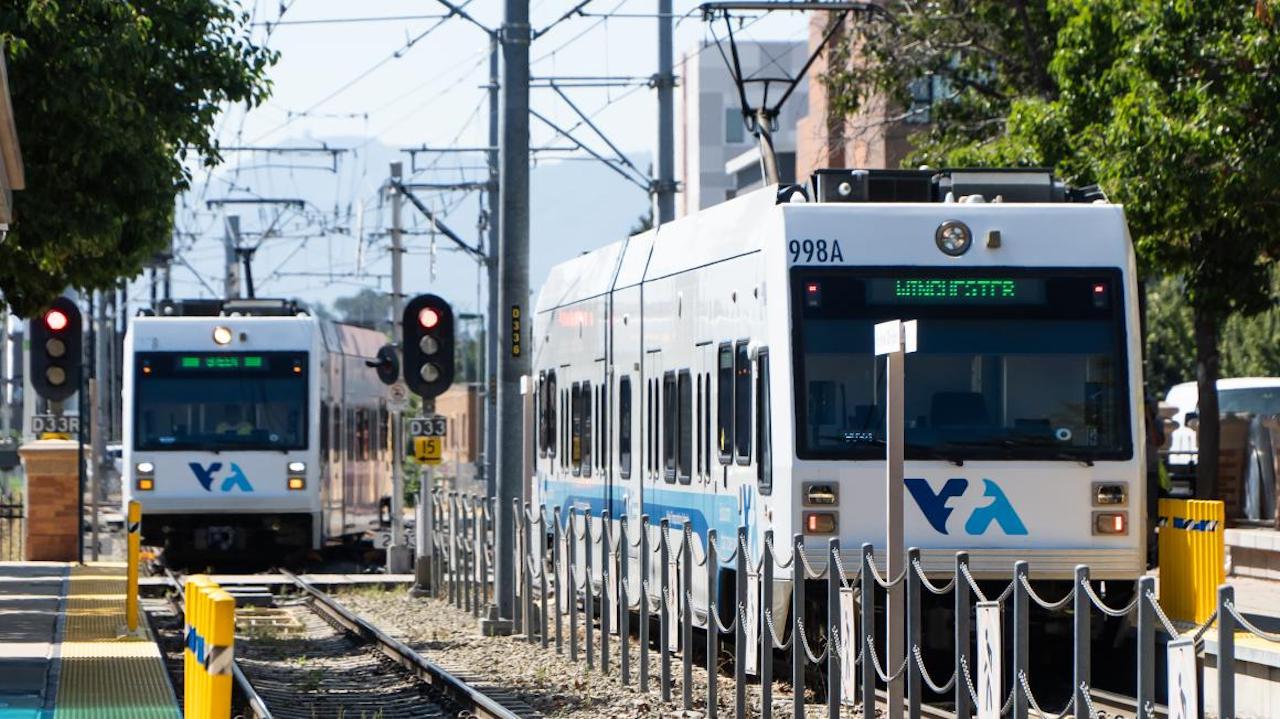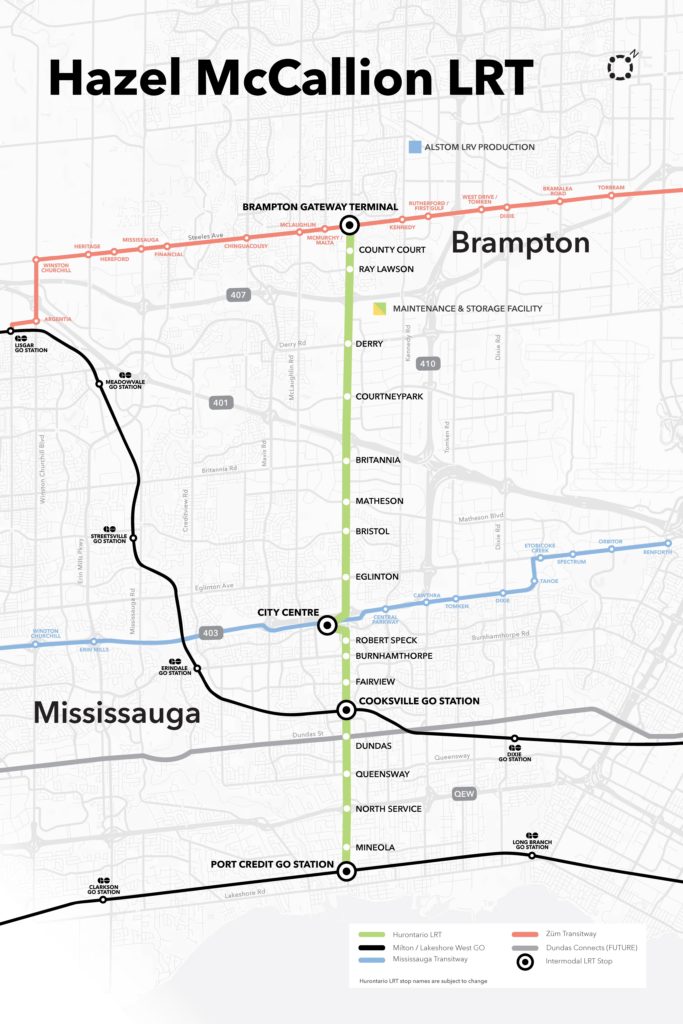
Transit Briefs: Metrolinx, VTA
Written by Carolina Worrell, Senior Editor
VTA photo
Ontario confirms the government’s plan to extend Metrolinx’s Hazel McCallion Light Rail Transit (LRT) project. Also, Valley Transportation Authority (VTA) share updates on the state of its light rail system.
Metrolinx
Premier of Ontario Doug Ford on Feb. 8 confirmed, while speaking at the Mississauga Board of Trade, the government’s plan to extend Metrolinx’s Hazel McCallion LRT project (formerly known as the Hurontario LRT project) by building the Mississauga loop and bringing the line into downtown Brampton. Ford also confirmed the Ontario government’s support to enhance GO train service along the Milton line with two-way all-day service and urged the federal government to be a full funding partner.
“Our government is investing more than $70 billion over the next decade to lead the largest expansion of public transit in North America, including across Peel and Milton regions,” said Ford. “Alongside Highway 413 and the Bradford Bypass, our government has a plan to move Peel and Milton regions’ people and economy forward.”
According to the Office of the Premier, Ontario has accepted the initial business case for the expansion of the Hazel McCallion LRT and is moving forward with this important project. The LRT will include a four-kilometer (2.48-mile) extension of the line into downtown Brampton via Main Street from the Brampton Gateway Terminal and a two-kilometer (1.24-mile) extension with a loop in Mississauga. The loop will connect LRT service to Square One with additional stops through to Confederation Parkway. The LRT will provide one of Canada’s quickest-growing cities with “faster, more frequent and more reliable transit than the existing bus service, traveling in an exclusive right-of-way with signal priority at intersections.”

Ontario is also calling on the federal government to agree to a cost-sharing partnership that will deliver all-day, two-way GO rail service along the Milton GO rail corridor by building a fully separated passenger rail line. The Milton GO rail corridor is the fourth busiest line on the GO network and serves as a vital transit connection between Milton, Mississauga and the rest of the Greater Golden Horseshoe. That is why, the Office of the Premier says, Ontario is also planning to reinstate train trips, improve stations with new customer amenities, such as expanding the south parking lot and a pedestrian bridge at Milton GO station, and advance the planning and design work to support future two-way, all-day service.
“Everyone in Ontario deserves access to reliable transit options that connect them to good-paying jobs and housing,” said Minister of Transportation Prabmeet Sarkaria. “The extension of the Hazel McCallion LRT and Milton GO rail corridor are essential next steps in our mission to get commuters where they need to go, when they need to be there. We urge the federal government to share in the cost of this critical project in Milton to meet the growing needs of this region.”
Over the next decade, Ontario is investing $70.5 billion to transform public transit in the province, the largest transit investment in Canadian history.
VTA
VTA kicked off its first “Ask VTA” of 2024 with an update on the state of its light rail system and information about what’s to come in the near future, which includes overhead wire and rail repair work, a new vehicle pilot, and the start of construction on the Eastridge to BART Regional Connector (EBRC).
The event began with a quick overview of VTA’s light rail system, which includes 60 stations and approximately 42 miles of track, making it one of the nation’s largest systems. According to VTA, service is currently running at 96% of pre-pandemic levels. Service is expected to reach 100% later this year with a return to 20-minute intervals on weekends. Some late-night trains will be replaced with bus service to allow for more maintenance to take place during the overnight window. Details are available here.
VTA staff also shared that segments of light rail lines will again be out of service this summer to allow for the repair or replacement of portions of the overhead wire system. Rail ties and ballast will also be replaced during planned shutdowns.
“Ask VTA” participants also learned about the process under way to replace the agency’s aging light rail vehicle fleet. With current trains expected to reach the end of their useful lives in the next 7-10 years, staff are currently learning more about replacement options. Among the factors to consider include the length of vehicles, bicycle capacity, ability to move within the train, customer convenience, and propulsion system. A pilot program where prospective trains can be tested on the VTA system is expected in 2025.
Closer on the horizon is the start of construction for the EBRC light rail extension, which, VTA says, is expected this spring. This 2.4-mile extension starts at Alum Rock station and consists of an elevated light rail station at Story Road and an at-grade station located at the Eastridge Transit Center.
The agency’s next “Ask VTA” event continues Feb. 29 with an extended 90-minute Q&A focused on VTA’s BART Silicon Valley Phase II Project.



